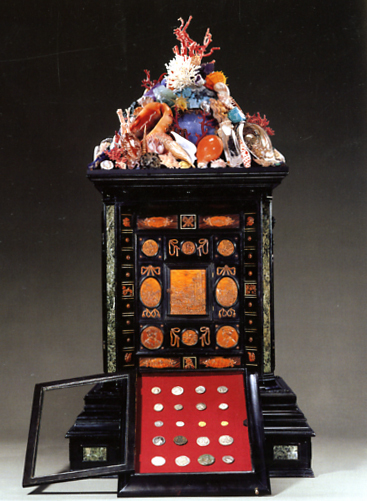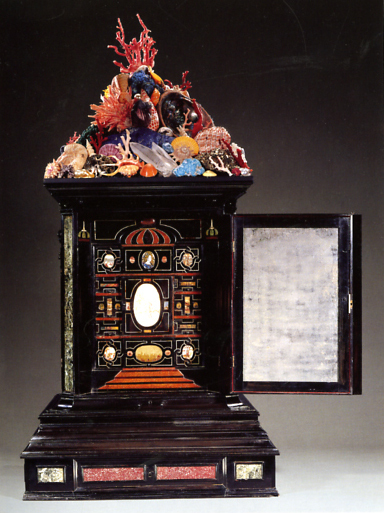Sides
The sides of the kunstschranck, as aptly worded by Terpak, "focus more on the active rather than the contemplative life" (note 1). Christ and the Samarian woman, Judith and Holofernes, Samson and Delilah – the depictions upon the carved or painted medallions seem to "emphasize biblical acts of charity" (note 2). Yet historicized figures make an appearance as well, such as Lucretia and Cleopatra. The abundance of female figures suggest that the case was created for an aristocratic woman. These two sides, then, offer "the sacred" and "the secular," in continuation of Stafford's analysis (note 3).
While the doors of the two sides do not as elaborate of a visual programme as do the front and back, they rather showcase unique functions. The door of the proper left is a singular mirror (notable for its size), while the door on the right is a glass vitrine lined with scarlet velvet. The correspondence between the two is exceedingly clear; just as the owner's face would be visible in the surface of the mirror, her possessions can be seen through the glass vitrine. Such a tension between and clear juxtaposition of opacity and reflectivity is especially provoking; does the viewer activate the objects or do they act upon us?
Notes:
note 1. Frances Terpak, Devices of Wonder: From the World in a Box to Images on a Screen. (Los Angeles: Getty Research Institute, 2001), 163.
note 2. Terpak, Devices of Wonder, 163.
note 3. Refer to the previous page on the front and back of the cabinet. The quote is taken from Barbara Stafford, Devices of Wonder, 14.

